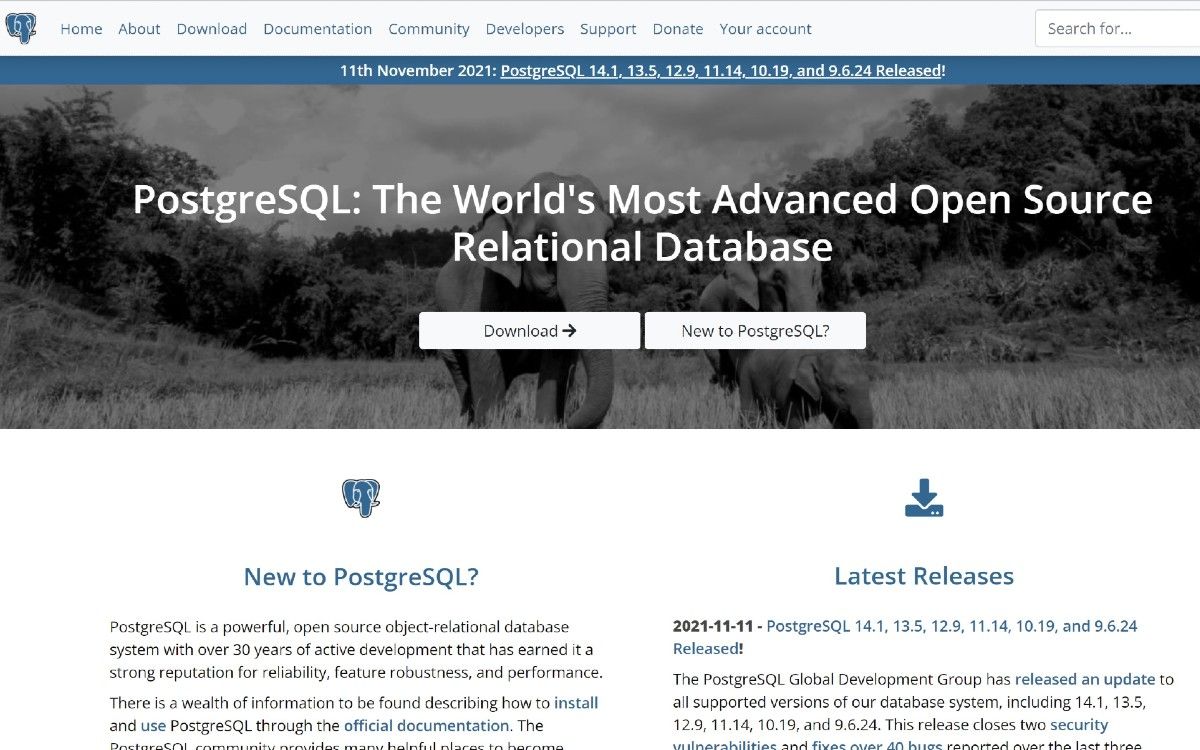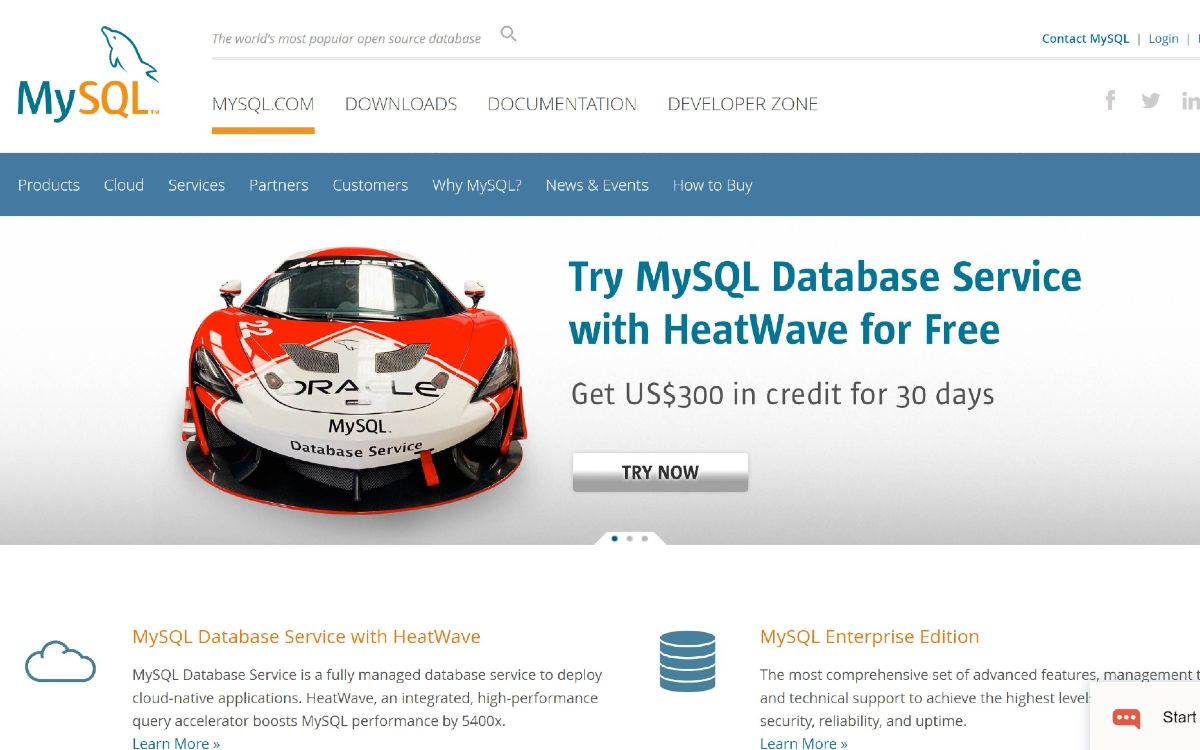There are tons of database management tools in the market currently, but the evergreen battle between PostgreSQL and MySQL never ceases to amaze users.
The right SQL database solution will offer the best compatible solutions for your data architecture. It can make or break your data's operational flexibility, scalability, ease, cost, maintenance, amongst other things.
As a database analyst, should you use MySQL or PostgreSQL for managing your data operations? Let's find out what's best for you.
What Is PostgreSQL?
PostgreSQL is an objective-RDBMS that allows you to work with complex queries and high-volume data operations. It currently finds patrons among eminent names such as Apple, Yahoo, Meta, etc.
Despite being an open-source database, the tool offers a potent database engine strengthened by almost three decades of community and developer updates.
PostgreSQL has found widespread use in enterprise-scale operations as a low-cost RDBMS solution. It is savvy and poses intense competition for relational (SQL) and non-relational (JSON) data. The tool executes long-winded queries on structured, semi-structured, and unstructured data.
Postgres' long list of efficient features has made it a must-have for end-users. Some prominent features include a SQL interpreter's ability which helps it handle diverse data types.
The tool is adept at handling RDBMS concepts like table-linking and facilitates easy integration with cloud systems. Postgres offers many other resourceful qualities that make it a noteworthy competitor to MySQL.
What's Good About PostgreSQL?
Some highlights of PostgreSQL which deserve a notable mention include, but are not limited to:
- Multi-version concurrency support, point-in-time recovery, and locale-aware sorting
- A set of mature documentation that supports rapid-learning for complex query-handling
- Open-source nature so that startups can use the same mature DBMS solution as veteran enterprises
- A broad scope of library support for aiding custom DBMS requirements
- Granular accessibility standards with nested transactions and refined query planning
- The database tool supports a large selection of platforms
- It is programmed with contemporary and battle-tested web programming languages
- Postgres owns a dedicated open-source community support
What's Not So Good About PostgreSQL?
Like the two sides of a coin, Postgres has some notable drawbacks, which we've highlighted below:
- Poor horizontal scalability support
- Interoperability issues arise when executing the same database with different versions of PostgreSQL on other systems
- Lack of support for modern file types, including raw audio/video formats
- Slow reading speeds in comparison to modern contemporaries due to its singular storage engine
- Poor documentation language support
- Problems with local operations
- JSON data types require expert query handling capabilities
What Is MySQL?
MySQL offers unparalleled, scalable RDBMS service that empowers reliable, general-purpose web applications. You will find many of your favorite brands like Twitter, GitHub, Google, Flickr using the likes of MySQL.
MySQL has spawned an extensive library of plugins and extensions in a short period, with an intent to outrival PostgreSQL and its contemporaries.
Oracle owns, maintains, and runs MySQL; the organization guarantees premium-quality RDBMS support at no cost. Rest assured, MySQL is a standard database solution for several web programming stacks.
Developers perform online transaction processing and analytical processing with MySQL. Its versatility is evident in its use with API/Webhook-driven web services and apps, CMS platforms, real-time web services, and many more.
The tool's present iteration widely supports data recovery, middleware, data integrators, and security solutions.
What's Good About MySQL?
MySQL has gained widespread recognition and utility, given its usage and adaptability as a tool of choice.
- It supports and offers in-built geographic data mapping support for geospatial data types and functions
- MySQL has a low service disruption rate and retains stability despite rapid scaling opportunities
- The RDBMS tool has high accessibility coupled with variegated programming language support
- You can perform high-speed transactions with its multi-storage engine
- Check out its extensive documentation for guidance and learning support
- MySQL's adaptability, security, and incremental addition of features and patches continue to make it a preferred choice
- In-built geospatial data type and function support for geographic data mapping
What's Not So Good About MySQL?
While MySQL offers excellent features to the end-users, we can't ignore some of its drawbacks that easily. Let's take a look:
- Poor support for analytical query functions
- Poor non-RDBMS programming support
- Automated migrations are seldom flawless
- Incomplete documentation in some areas, for example, data replication
- Extensive infra requirements can result in performance trade-offs
- Poor table joining a support
Best Use Cases
Both PostgreSQL and MySQL have their fair share of strong points, but the deciding factor will mostly depend on your use case.
PostgreSQL
- Large-scale projects
- Strong SQL experienced team
- Higher scope of vertical scalability
- Low budget
- Offline DBMS projects
- Localized BI and analytics warehousing
MySQL
- Web projects that use LAMP/WAMP/XAMP stack
- Low SQL skill availability
- Better scope of horizontal scalability
- High budget for commercial add-ons and premium MySQL versions
- Cloud-readiness paves the way for web-ready emerging tech projects
- Useful for scalable, offline DBMS operations
PostgreSQL vs. MySQL: The Battle Concludes
There is no clear winner between Postgre and MySQL. Both are relevant in their own ways, and users can use each tool as per their needs and wants.
The idea was to define the usage, extent, and architecture so that users could best decide on the tool of their choice.



